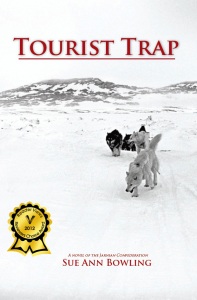Know how a contrail forms?
No, it has very little to do with particles produced by a jet engine (or a propeller engine, for that matter.) The culprit is water vapor.
Burning any hydrocarbon fuel, no matter how cleanly, produces two gasses: carbon dioxide and water vapor. If the fuel is dirty or combustion is incomplete or very hot, other things may be produced—sulfur compounds, nitrogen oxides, carbon monoxide, particulates—but the energy we get out of burning hydrocarbons comes from combining oxygen from the air with the hydrogen and carbon that make up the bulk of the fuel.
An oxygen atom plus two hydrogen atoms is a molecule of water. A carbon atom plus two oxygen atoms is a molecule of carbon dioxide. The definition of clean combustion is combustion in which only these two compounds are produced.
Fuels vary in their ratio of carbon to hydrogen. Coal has about equal quantities of each, and when cleanly burned produces more than three times its weight in carbon dioxide and somewhat less than its weight in water. Gasoline has about 2 atoms of hydrogen to one of carbon, and produces a little less carbon dioxide but more than its weight in water. Straight hydrogen does not produce carbon dioxide, but produces a whopping nine times its weight in water.
In most climates, we can ignore the water, at least near the ground. But the air can only hold so much water, and the amount it can hold decreases rapidly with temperature. What’s more, the limit on how much it can hold differs depending on whether ice is present. It is perfectly possible for air to have more moisture than it could hold if ice were present, but not enough that moisture condenses out in cloud droplets. In fact, this is very common at high elevations.
Further, cloud droplets can have a temperature well below freezing, but still be liquid droplets. They can be triggered into freezing by ice nuclei, the most effective nucleus being a sliver of ice. This is how wing icing on airplanes occurs, by flying through what are called supercooled clouds—clouds of liquid water drops at subfreezing temperatures..
At very low temperatures, below about –40, an ice nucleus is not necessary, as a droplet will freeze spontaneously.
Now imagine an airplane flying in air with a temperature below –40 (true of most commercial flights today) with a moisture content not high enough for cloud formation, but high enough that ice crystals can grow. The engine exhaust contains large concentrations of water vapor—enough to cause condensation of droplets just behind the plane. Since the temperature is below –40 these droplets will freeze very rapidly. Once they are frozen they gather in water from the air around them. The result is a contrail that is not only visible, but grows.
Most areas don’t have ground temperatures below –40 very often—but here in Fairbanks, Alaska, we do. Automobiles leave contrails in these conditions. More, many of the pollutant particles we spew into the air act as ice nuclei at temperatures a little warmer than –40, so the combined persistent contrails—ice fog—can occur well above –40. It’s fog made of ice particles, rather than water droplets. It’s densest just behind each vehicle, making it hard to see the tail lights of the car ahead.
Growth from vapor makes well-formed crystals that produce optical effects like sun dogs, halos, and ice pillars. We have those, but not in ice fog. Ice fog particles are basically frozen droplets, and while they are crystalline, they do not generally have the clearly defined facets necessary for them to act as prisms. So ice fog looks just like fog.
Sad to say, my photos of ice fog all seem to be slides that have not been digitized. Does anyone have a good photo of ice fog or contrails I could put on this page?







 Buy Homecoming from iUniverse
Buy Homecoming from iUniverse















